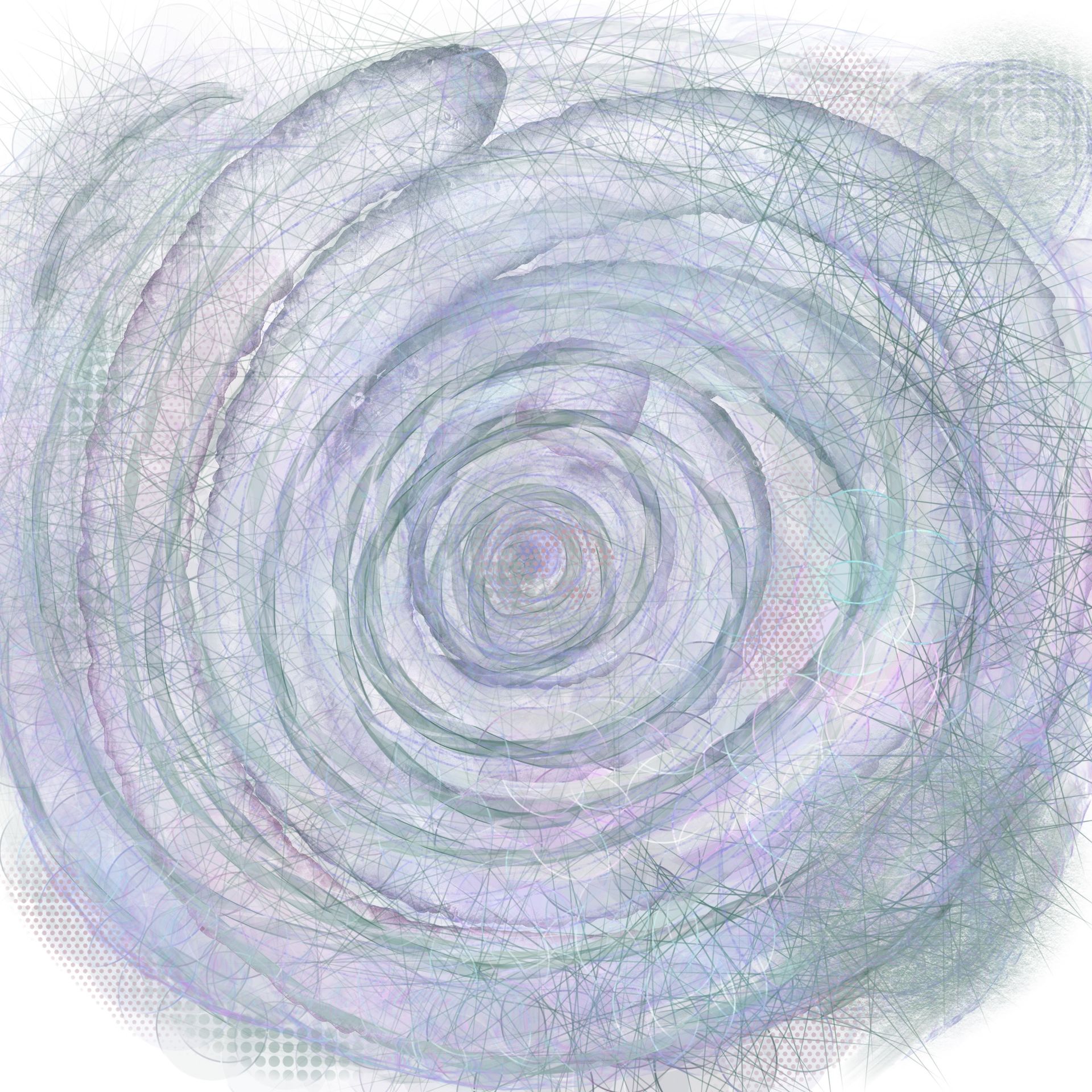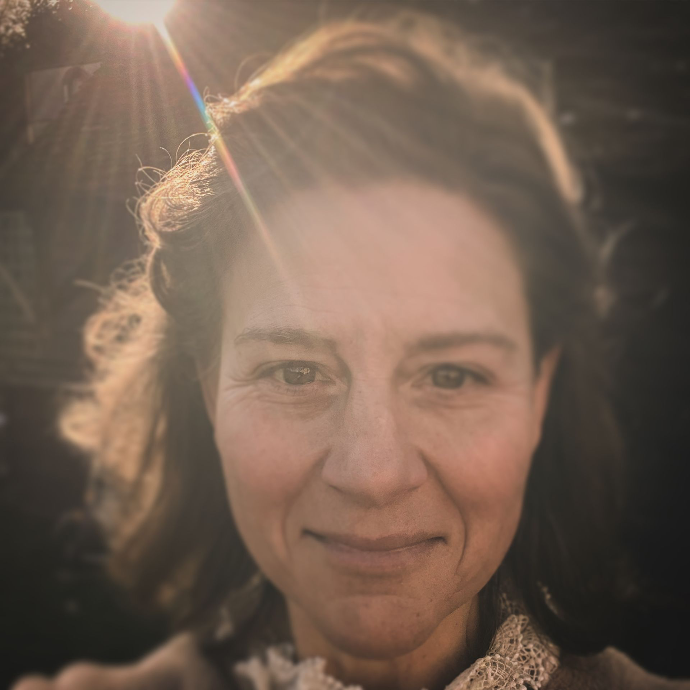
Our mission
We guide individuals from survival to thriving by restoring balance within their system, allowing their innate health to shine through. This enables them to become more embodied and aware and as a result more resilient and energised.
Our practice is dedicated to supporting women and children, with a special focus on uplifting women—now more crucial than ever. In a world where women disproportionately bear the weight of family and societal pressures, they often face higher rates of chronic and autoimmune conditions, exacerbated by stress and overwhelm.
By empowering women, we not only help them reclaim their health, but also enable them to uplift their families and communities, creating a powerful ripple effect of change.
SARA KRAMER - Accredited Craniosacral Therapist with appointments in London and Farnham, Surrey
Appointments at Farnham Natural Therapy, 7 Alexandra House, Hones Business Park, 1 Waverley Lane, Farnham GU9 8BB
What is Craniosacral therapy?
Craniosaral therapy is a gentle, but potent way of working with the body using light touch. The focus is on the system between the head (cranium) and the base of the spine (sacrum) to include not only the vertebral structure but also the tissues and fluids of the body. It is based on a holistic view of health in the body which encompasses the body's physical structure, fluid systems, subtle energy, and inherent vitality. It reflects the dynamic interplay of all these elements, and the practitioner’s role is to perceive, support, and facilitate balance and healing within this interconnected system. Posture, stress, illness, or trauma can all produce restrictions or imbalances in the craniosacral system, which may manifest as physical or emotional disturbances.
If you don't know if this work would be helpful for you please do get in touch and we can talk about any concerns or questions you may have.

History of Craniosacral Therapy
Craniosacral therapy (CST)—work in the cranial field was developed by Dr.William G. Sutherland, D.O. in the US in the 1940’s based on his discovery that subtle movements of the cranial bones and the flow of cerebrospinal fluid influenced health. In the 1970s, Dr. John E. Upledger, another American osteopath, refined cranial osteopathy into craniosacral therapy with a focus on membranes and fluids and less on mechanical manipulations. The biodynamic approach was developed in the 1980's by Franklyn Sills, a British osteopath, who incorporated concepts from Sutherland but focused more on the body's natural rhythms and innate healing forces, rather than mechanical adjustments.

A typical treatment
An initial consultation will take 1h15 as a full medical history will be taken, subsequent treatments are 50mins. The session involves lying fully clothed on a treatment table. The practitioner will place their hands lightly on your head/spine/feet during the session, using them to listen to you in much the same way that a counsellor might listen to your words. The practitioner facilitates a dialogue with the body, encouraging its natural processes of healing and integration. A feeling of release and that you have been heard is a common experience during a CST session.

About the practitioner
A burnout at age 40 turned all my certitudes on their head. I was lucky to have powerful matriarchs that I could lean into, a strong partner and community, and time to invest in learning how to rebalance my body in a holistic way, taking into account nutrition, exercise, mindfulness, sleep and this powerful cranial work. This has fuelled my life purpose; I feel very driven to support other women. The statistics show that women suffer disproportionately from chronic illnesses. They are also often expected to take on caregiving roles, both within families and society at large. This can lead to chronic stress and burnout.
" We have had several sessions with Sara for different reasons and can 100% recommend her. Sara helped my teenage son to ease a lot of pent up tension in his body from stress and anxiety related to school and exams as well as misalignment due to growth spurts. She also helped me with various muscle and joint aches and pains.
Through Sara we have learnt that the benefits of craniosacral therapy go so much further than other schools of osteopathy. The non-invasive but powerful treatment really helped us. Sara also has a very calm and pleasant persona and a holistic approach to problems which manifest in different ways. "

"Sara is a deeply empathetic and caring practitioner with a wealth of experience in working with families like ours who are struggling with chronic health conditions such as Long Covid, chronic fatigue and ME. She treated both my 9 year old daughter and me through a period of intense physical and emotional stress (caused in my daughter’s case through illness and in mine, through the trauma of having become the carer for a seriously ill child).
Sara was kind, gentle and a calming presence for both of us. She worked on each of our nervous systems intuitively and with deep knowledge and expertise. Sara always took the time to tell us at the end of each session where she had felt tension or blockages in our bodies and where she had felt energy beginning to move. After a session with Sara, we would feel much more rested and regulated, with a sense of having a much more coherent energy flow.
In between sessions, Sara would often share helpful resources or articles and she was very much up to date with the most recent scientific research and protocols in the field.
My daughter and I felt very lucky to have had Sara come into our lives when she did and we are very grateful to her. I would strongly recommend her as a craniosacral practitioner for both adults and children."

"I would encourage anyone who is intrigued by craniosacral work to just book one and find out. I had never experienced it before but was amazed how quickly I felt a sense of deep relaxation during my session with Sara. Initially I was struggling with digestion issues but noticed over subsequent visits that my sleep was greatly improved and consequently my ability to deal with daily stress was also better. Over a series of sessions I realised that I had more energy and consequently was more able to implement dietary changes and other things that have also helped support the digestion issues. I now look forward to my check-ins with Sara"

" Sara was always very kind and gentle and she was always thinking of new and creative ways to help me to get better "

Frequently asked questions
if your question isn't covered here, send me an email and we can discuss your case
This therapy works with the underlying forces that govern how we function, rather than just the effects or symptoms of these forces.
It is a gentle therapy, boosting the body's own inherent health and as such it is beneficial to all. But as with all modalities, consult with a licensed healthcare professional to ensure CST is appropriate for your specific condition.
Here are some particular issues that it can benefit -
Chronic Pain Conditions:
- Migraines and headaches
- Neck and back pain
- Temporomandibular joint (TMJ) dysfunction
Stress and Emotional Disorders:
- Anxiety and depression
- Chronic fatigue
- Sleep disturbances or insomnia
Pediatric Concerns:
- Colic and digestive issues in infants
- Ear infections
- Hyperactivity and attention-deficit disorders
- Anxiety
Post-Surgical Recovery:
- Helps promote healing and reduce scar tissue tension
- Alleviates lingering discomfort from surgeries
Orthopedic Issues:
- Joint stiffness or mobility restrictions
General Health Maintenance:
- Improves immune system function
- Enhances overall well-being by promoting a balanced state within the body
CST is often used as a complementary, rather than primary, treatment, therefore the scientific studies are limited. Here are a couple that I found of interest
Reducing stress in firefighters
https://pmc.ncbi.nlm.nih.gov/articles/PMC10669461/
Reducing traumatic brain injury symptoms
https://pmc.ncbi.nlm.nih.gov/articles/PMC7829464/
BCST-Diploma in Biodynamic Craniosacral therapy at CTET, London (https://cranio.co.uk/)
Anatomy - Diploma in Living Anatomy at CTET, accredited by the Federation of Holistic Therapists (https://www.fht.org.uk/)
Member of the British Complementary Medicine Association (BCMA), (https://www.bcma.co.uk/)
Member of the International Affiliation of Biodynamic Trainings (http://biodynamic-craniosacral.org/)
Working with Neurodiversity in the developing child, adolescent and adult, Ian Wright GSC (1st), DPO, FSCCO
Emergency First Aid at Work accredited by TutorCare (https://diplomas.tutorcare.co.uk/about/)
Dedicated to continuing professional development (CPD) to deepen knowledge and therapy skills. Also receive regular personal therapy/supervision.
Dr. Gabor Maté, When the Body Says No: Exploring the Stress-Disease Connection
Women are often socialised to prioritise the needs of others over their own which can leave women feeling overwhelmed and depleted. This prolonged stress can disregulate the immune system, a hallmark o autoimmune diseases. Although Maté's primary focus is on psychosocial and emotional influences he also discusses the biological factors - women's immune systems are naturally more active than men's (largely related to hormonal fluctuations and reproductive capabilities)
Bessel van der Kolk, The Body Keeps the Score
Emotional trauma is often stored as muscle tension and physical constriction, particularly in areas like the neck, shoulders, chest, and pelvis. The body becomes a container for the unresolved pain, holding onto it as a form of protection. This pain, for example migraines, autoimmune conditions, or other unexplained illnesses are possibly the physical symptoms of what the mind has suppressed.
Michael Kern, D.O., RCST, Wisdom in the Body: The Craniosacral Approach to Essential Health
MK is recognized for his work in advancing the understanding and practice of craniosacral therapy, blending osteopathic principles with a holistic and biodynamic perspective. This book explains the principles and philosophy of craniosacral work in an accessible way, integrating anatomy, physiology, and the body’s inherent healing wisdom.
Hugh Milne, Heart of Listening
Better health outcomes involves a profound connection between the practitioner and the client, based on trust, respect, and empathy. The concept of being fully present with the client is central to the therapeutic process.
James Nestor, Breath
A combination of personal experience, scientific research, and historical perspective to highlight how modern lifestyles have led to poor breathing habits and their detrimental effects on physical and mental health. Super interesting how the repetitive nature of prayer aligns with the optimal breathing rhythm.
“The rosary, the OM chant, the Buddhist mantra—they all work on the same pace. Six seconds in, six seconds out. When recited at the proper pace, prayers slow the breath, stimulate the vagus nerve, and calm the mind.”
Which underscores how ancient spiritual practices instinctively fostered breathing patterns that promote physiological and psychological well-being.

S Kramer
BCST, BCMA Reg
reach out for more information or to book an appointment
special rates for healthcare workers and carers
